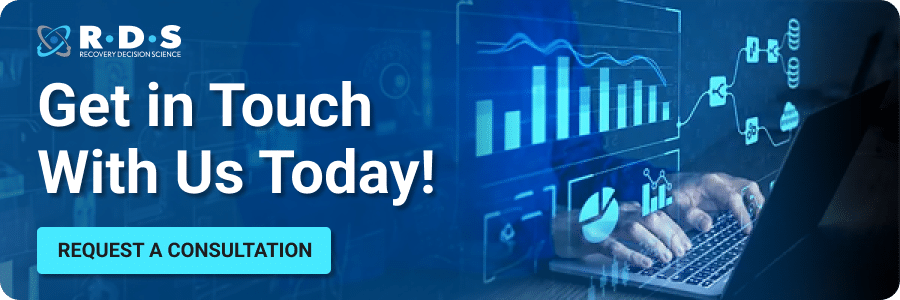The debt collection industry is in a tight spot as we enter 2024: with collections decreasing for the last two years and experts warning of rising defaults in the new year, organizations must find a way to pursue the right accounts and increase profitability.
Fortunately, a range of technological debt collection trends present an extraordinary opportunity to not only survive but thrive in 2024.
How?
Read on to learn 5 key trends forward-thinking debt collectors will embrace in the next 12 months.

-
AI Maturity
Finance firms have been relatively slow to adopt artificial intelligence (AI) due to the heavily regulated nature of the industry, but 2024 will see this change. 63% of fund leaders now say AI will be the most significant innovation to shape business over the next decade, and data analysis is the factor most leaders point to when asked how debt collection will change.
2024 will see debt collection reach “AI maturity”, with machine learning and advanced analytics shifting from optional extras to essential aspects of leading organizations’ collection strategies. This will lead to a vast improvement in collection efficiency; our research at RDS has shown that AI can enable firms to recover 96% of their original collections by targeting just 30% of accounts.
However, it will also change what it’s like to work in debt collection through…
-
Process Automation
Debt collection has historically involved a large volume of manual tasks, with teams analyzing individual accounts to determine whether to pursue with legal action. This is highly inefficient: in our experience, the average person in an audit team can effectively analyze around 10-20 accounts per hour, depending on the system they are using. This creates a clear bottleneck in organizations with large, complex debt portfolios, but machine learning tools remove that bottleneck and allow for faster approval of accounts for placement and suit.
AI maturity will also spur many organizations to tackle the problem of human error, leading to a revolution in debt collection automation that saves employees time, removes inconsistencies and enables…
-
Vendor Consolidation
Many organizations currently rely on a large network of third-party vendors to support their collections. Few can afford to keep legal and pre-legal experts in-house, nor can they source and utilize cutting-edge debt collection technology.
However, this leaves many organizations managing 50+ vendors, which inevitably creates complexity. It also makes it difficult to maintain strong relations with any single vendor and reduces the visibility of individual accounts.
AI maturity will spark a profound shift in the way many organizations think about third-party vendors. As it becomes clear AI can take over many of the tasks these vendors have traditionally been relied upon for, organizations will begin to streamline and consolidate their partnerships to increase efficiency and make life simpler for their internal teams.
-
Customer-centric Debt Collection
The flip side of debt collection automation is the possibility to develop systems that make life easier for consumers. With rising adoption of digital payments and generative AI-driven chatbots, consumers will be able to manage and understand their debt obligations better in 2024 – which reduces conflict between consumers and debt collectors.
Another key factor here is suit-decisioning: the ability for organizations to analyze and pinpoint accounts that can actually afford to repay their debts. This produces more efficient collections, because you are spending less on legal action that doesn’t lead to a repayment, as well as a reduction in likelihood that debt collection will negatively impact vulnerable consumers that can’t afford to pay their debts.
Both factors have the potential to fundamentally alter the future of the collection industry. However, making these systems a reality will force organizations to confront…
-
Data Privacy Challenges
62% of finance firms already say they spend more on compliance than they did a decade ago, and data privacy concerns around AI will likely exacerbate this problem. From utilizing large data sets to producing decisions that are not “explainable”, AI maturity will have to go together with a strong understanding and proactive attitude towards a range of new regulatory requirements.
What does that mean in practice? Organizations will need to find solutions that have compliance built in, rather than risking fines, reputational damage or increased compliance costs.
Reach AI Maturity Faster with RDS
After more than 37 years at the forefront of debt collection services, we have delivered the industry’s most powerful and comprehensive suite of AI tools for accounts receivables management. From suit-decisioning to recursive asset-searching, we empower your team to analyze more accounts faster, make better decisions and produce higher profit.
Pinpoint the best accounts to pursue with legal action, streamline your vendor network and hit your KPIs with confidence in 2024 by working with RDS.
Error: Contact form not found.



